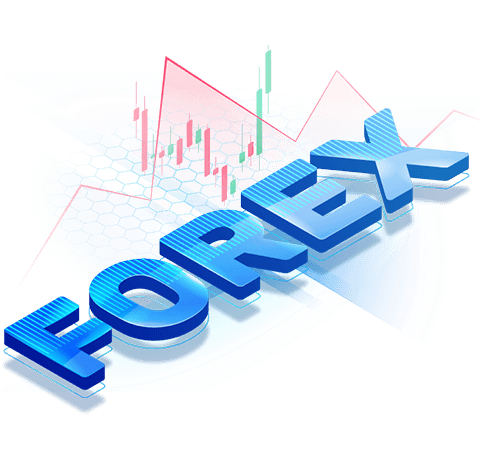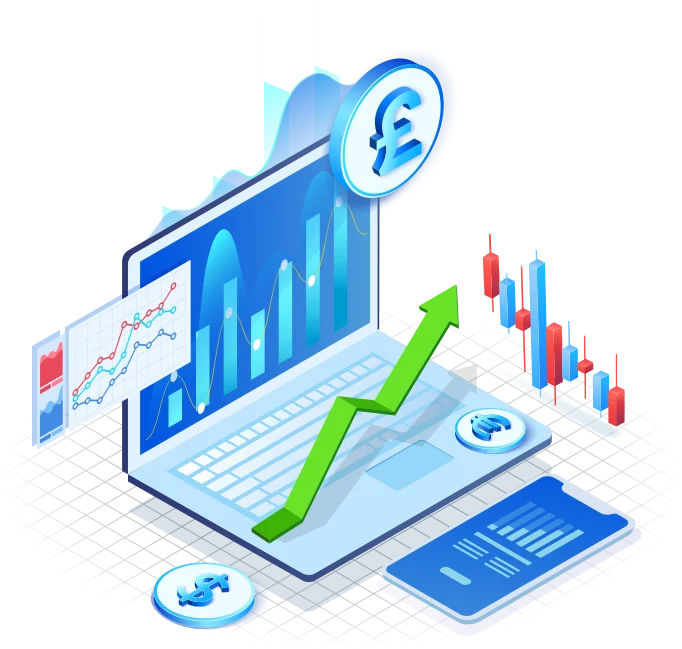
What is Forex Trading?
The process of exchanging one country's currency for another's within the context of this market is referred to as forex trading. Forex traders swap money denominated in one kind of currency for money denominated in another type of currency. This allows them to avoid the complexities of determining whether shares or commodities are the greatest investments. The foreign exchange market (forex) is one of a kind due to the fact that it is not only experienced traders that buy and sell currencies on this market; individuals from the general public can also engage in the activity of trading in currencies.
This is accomplished through the use of online forex brokers, which provide investing ideas as well as the opportunity to learn from more experienced traders. If you have ever bought something denominated in a different currency, at some time in your life, you will have participated in the foreign exchange market. This exchange can take place either at the time of purchase if you are using a credit or debit card, or it can take place earlier if you exchanged money in one currency for cash in another currency before you arrived. If you are making a purchase with a credit or debit card, the transaction will take place at the time of purchase.
What is the Forex Market?
The foreign exchange market is a marketplace where participants can sell, buy, exchange, and speculate on currencies. The financial institutions that make up the foreign exchange markets include investment management businesses, banks, central banks, hedge funds, commercial enterprises and investors, and retail forex brokers.
Commercial banks, forex brokers, other authorised dealers, and monetary authorities are the main players in the foreign exchange market. It is essential to keep in mind that the market itself is dispersed over the globe, despite the fact that individual participants may operate their own trading centres. The trading centres are in close and consistent touch with one another, and there is more than one market where the participants can engage in transactional activity.
In the following sections, you will have the opportunity to learn more about the various components of the forex market, including currency pairs, quotes, and how trading works. You will gain insight into the different types of currency pairs available for trading, including major pairs, minor pairs, and exotic pairs. You will also learn about quotes, including the bid and ask price, and how the spread impacts your trades. Additionally, you will get a detailed understanding of how to buy and sell currencies through a forex broker and how to speculate on the movement of currency exchange rates. By the end of these sections, you will have a strong base in the fundamentals of forex trading.

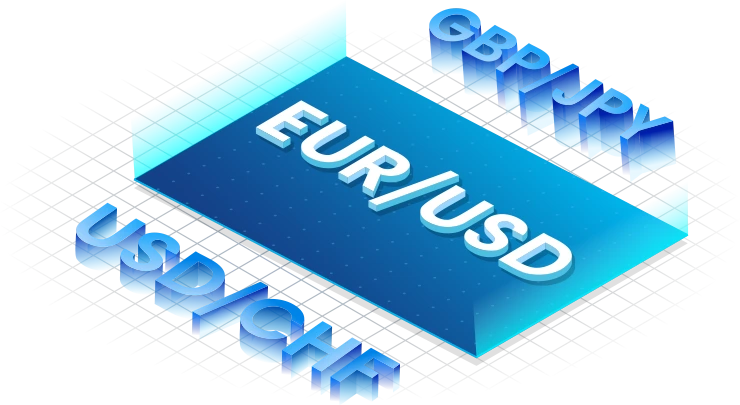
Understand Currency Pairs
In forex trading, you constantly buy and sell currencies. Investors buy the base currency and sell the quoted currency when they buy a currency pair. The bid price shows how much quote currency is needed to get one unit of the base currency.
When the currency pair is sold, on the other hand, the investor sells the base currency and gets the quoted currency in return. So, the selling price of a currency pair is the amount of the quoted currency someone will get in exchange for one unit of the base currency.
Still, when investors trade currencies, they sell one currency so they can buy another.
What are Base Currency and Quote Currency?
Currency unit prices on the foreign exchange market are called currency pairs. The base currency is the first currency in a currency pair's quote, and the quote currency is the second currency in the quote. Currency pairs are often shown as 6 letters separated by a dash, like this: XXX/YYY. In this case, XXX is the base currency, and YYY is the quoted currency.
Types of Currency Pairs - Major & Minor Currency Pairs
There are three main types of currency pairs: Majors, Minors, and Exotics.
Majors:
Major Currency Pairs are the currencies that are traded the most around the world, which is why they are called "major." Also, this type of currency pair is the most liquid and always involves the U.S. Dollar (USD) being traded against other major currencies, such as the Euro (EUR), the British Pound (GBP), the Swiss Franc (CHF), the Japanese Yen (JPY), the Canadian Dollar (CAD), the Australian Dollar (AUD), and the New Zealand Dollar (NZD) (NZD). The EUR/USD, AUD/USD, and USD/CAD are some of the most traded Majors.
Minors:
Minors are currency pairs that don't include the US dollar. They are usually less liquid than Majors. Minors are pairs like EUR/JPY, AUD/JPY, and GBP/EUR.
Exotics:
Because they are made up of currencies that are hard to trade, exotics are usually the least traded. The GBP/SEK is an example of an exotic pair.
Changes in the foreign exchange market can be caused by a number of factors, such as economic growth, international trade flows, and changes in interest rates.


How Does Forex Trading Work?
Forex trading is comparable to the buying and selling of other types of securities, such as stocks. The primary distinction is that forex trading is executed in pairs, such as EUR/USD and JPY/GBP. When engaging in a forex transaction, you sell one currency and purchase another. You earn a profit if the currency you buy appreciates relative to the currency you sell. For instance, suppose the euro-dollar exchange rate is 1.40 to 1. If you bought 1,000 euros, you would pay $1,400 U.S. dollars. If the exchange rate increases to 1.50 to 1, you can sell the euros for $1,500, resulting in a $100 profit.
Lot in Forex
Currencies are traded in lots, which are groups of currency that are used to make forex trades more consistent. Since forex tends to move in small amounts, lots are usually very big. A standard lot is 100,000 units of the base currency. So, almost all forex trading uses leverage because most traders don't have 100,000 pounds (or whatever currency they're trading) to put on every trade.
Spreads in Forex
For a currency pair, the spread is the distinction between the quoted buy and sell prices. When you open a forex position, you'll be given two prices, just as in many other financial markets. The buy price, which is a little bit higher than the market price, is where you trade when you wish to establish a long position. You trade at the sell price, which is a little below the market price, if you wish to initiate a short position.
Pips in Forex
A pip is a unit of measurement used in foreign exchange trading to describe the difference in value between two currencies. Pip, which stands for "point in percentage," is the lowest standardised movement that a currency quote can experience. Pips are a unit of measurement used by traders to describe their position's profit or loss and to quantify the difference between the ask and bid prices of a currency pair.
A pip is often the fourth decimal place in major currencies, making a shift of one pip equal to 0.0001. A pip, however, is the second digit following the decimal point in some currencies, such as the Japanese Yen. Despite the fact that a pip is often the second or fourth decimal place, we frequently display a second decimal that represents a fraction of a pip.
Margin in Forex
Forex margin rates are usually given as a percentage. The margin requirement simply tells how much leverage you can use when you trade forex online with a broker.
Margin is the amount of money a trader needs to put up before they can start a trade. When you trade forex on margin, you only need to pay a small portion of the full value of the position to open a trade. When it comes to leveraged forex trading, the margin is one of the most important ideas to understand. It is not a transaction cost.
Leverage in Forex
When you use leverage, you can get access to huge amounts of money without having to pay for the whole thing up front. You can also make a small deposit instead. When you finish a leveraged position, the total amount of the deal shows how much you made or lost.
Even though this makes you more money, it also makes it more likely that you'll lose more than your margin and have other losses add up. To use leveraged trading successfully, you need to know how to deal with risk.


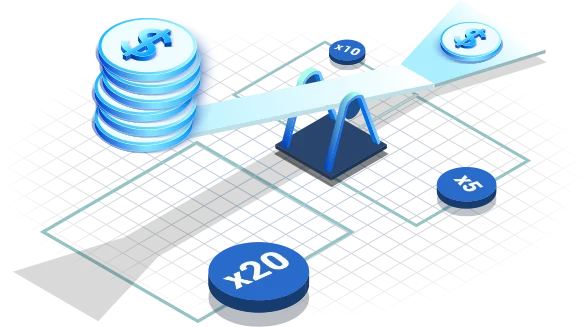
Type of Charts in Forex Trading
Forex charts are essential to understanding the movement of the currency markets. They can show you how prices are changing over time, and help you to make informed investment decisions. In this article, we'll go over the different types of forex charts and what they can tell you. Charts based on time, charts based on activity, and charts based on price are the three different categories.
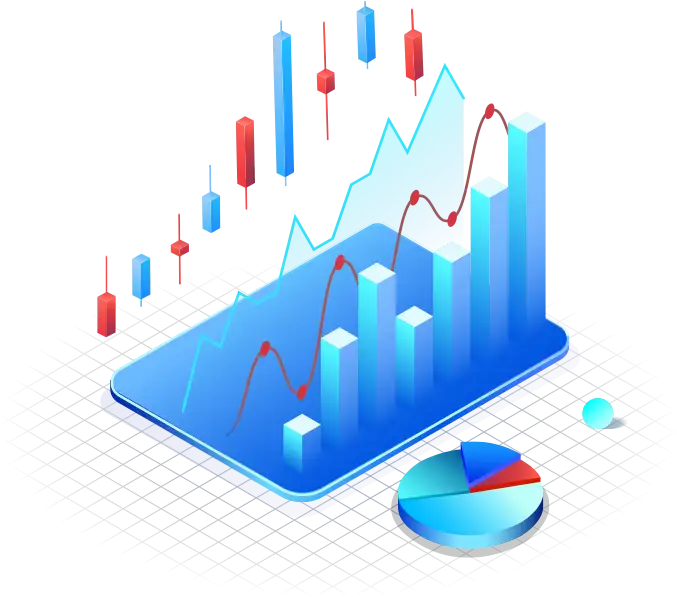
Time-based charts
The most popular kinds of trading charts.
Line charts:
A line linking closing prices.
Bar charts:
A vertical bar representing each period's open, high, low, and close (OHLC).
Candlesticks:
Showing the high and low as "wicks" and each period of open and close range as a vertical block.
Volume charts:
Each candle is made when the volume changes by a certain amount.
Tick charts:
A specific number of ticks or transactions are shown by each candle.
Volume profiles:
Combine time-based and volume-based charts to display the volume traded at various price levels.
Price-based charts
Range charts:
When the price changes by a predetermined price range, such as 100 pip, a bar or candle is formed.
Point-and-Figure charts:
Rising prices are represented by X columns, and falling prices are represented by O columns.
Renko charts:
When the price has moved a specific amount from the preceding brick, these charts—which resemble a succession of bricks—print.
Kagi charts:
They swivel after the price moves in the opposite way by a specific amount.
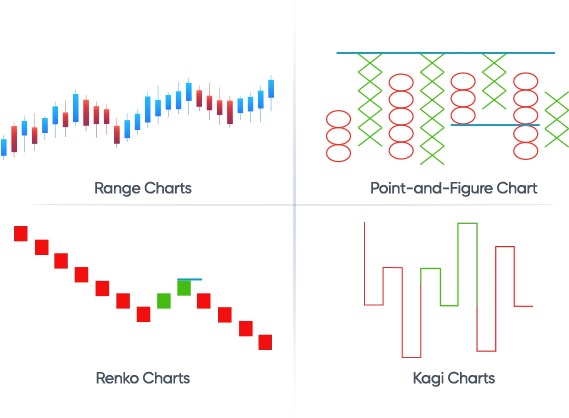

Forex Trading Platforms
In Forex, traders can trade currency pairs utilising software that includes a variety of tools and indicators. The terms MetaTrader 4 and MetaTrader 5 refer to the two most widely used trading platforms in the modern Forex market.
MetaQuotes created the MetaTrader trading platform, which includes MT4 and MT5. Due to its existence since 2005, MT4 is a well-known trading platform among traders. Although it was released in 2010, MT5 is the replacement for MT4, which is still widely used by traders.
The MT4 Trading platform is widely used and is establishing standards for the whole industry. The majority of Brokers use the MT4 trading platform to offer forex trading. This trading platform was launched in 2005 by a company called MetaQuotes. The business has enhanced MT4 with numerous features over the years. Even though the same business creates the MT5, MT4 is more commonly used. Know the difference between MT4 and MT5.
MetaTrader 4
A forex trading platform known as MetaTrader 4 (MT4) is used to trade on a variety of markets, including forex, indices, cryptocurrencies, and commodities. All regular traders typically choose MT4 due to its portability and security characteristics. Furthermore, MT4 automates your trading by opening and closing trades on your behalf. Learn here how to trade with MT4 trading platform.
MetaTrader 5
For the forex market, MetaTrader 5 (MT5) is a multi-asset, quick, effective, and safe online trading platform. It provides you with excellent trading options and technical analysis tools. The platform supports copy trading and the deployment of an automated system. It includes built-in features like a freelance database, a market for trading robots, etc.

Learn Forex Trading with CapitalXtend
Foreign exchange is a wide domain. And it is necessary to know the basics of the Forex industry and understand the fundamentals before thinking about becoming a trader. CapitalXtend's Forex academy provides a seamless learning experience from basic to advanced level to the enthusiasts who want to learn trading.
You can learn forex trading via our Forex academy. We have a complete curriculum to instruct beginners. Moreover, we also have a demo account to test strategies.
Follow these steps to start Forex trading:
- Choose your trading style for forex.
- Discover how the forex market operates.
- Create a profile
- Make a trading strategy
- Select a Forex trading platform.
- Open, watch, and then close the initial position.
Even for beginners with minimal expertise, the forex market can be appealing for a variety of reasons. The forex market is open to traders, who need only deposit a little amount of money to participate.
The market is also open five days a week, 24 hours a day (excluding weekends, when it is closed briefly).

